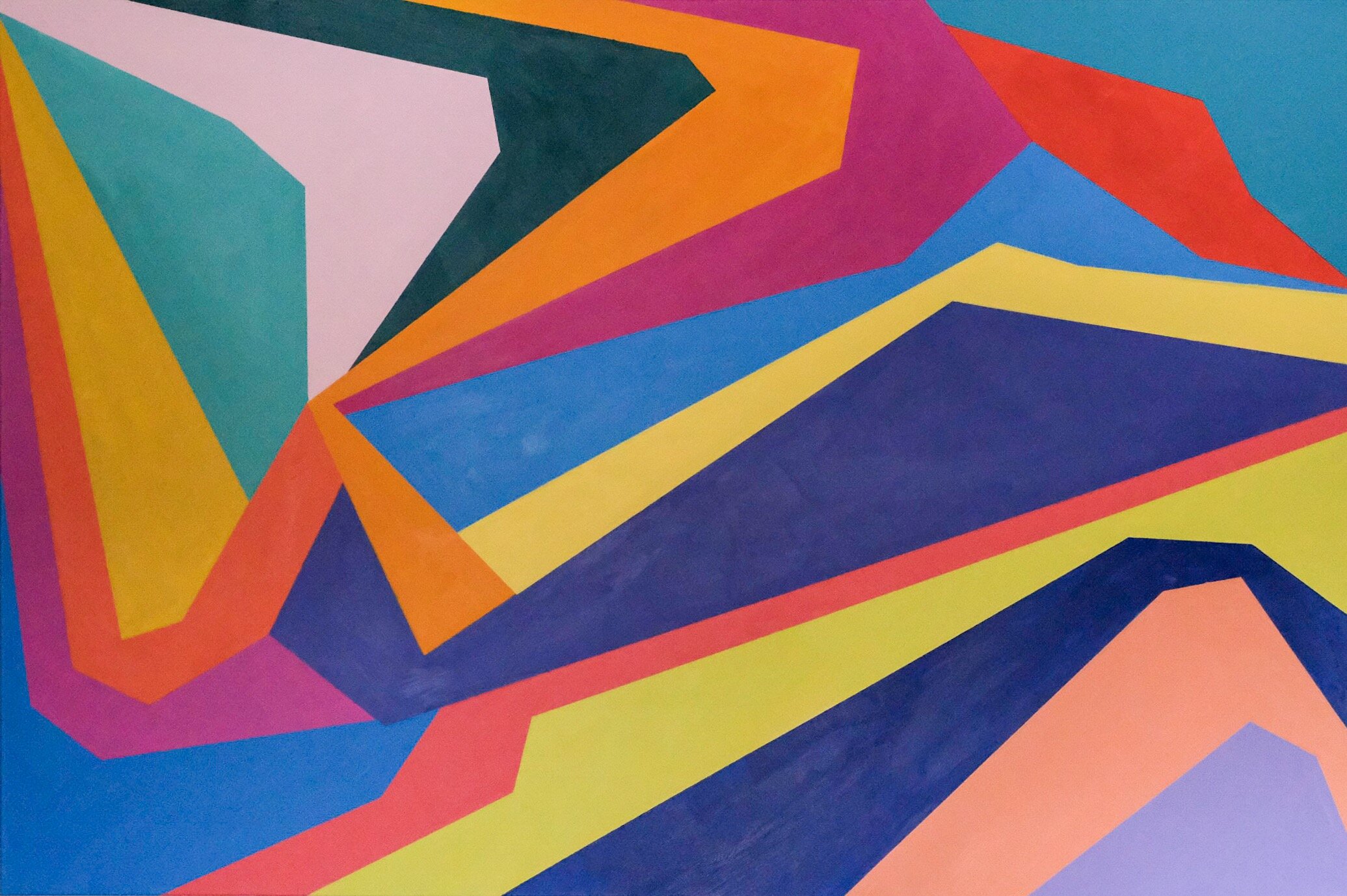
Omair Hussain
In Omair Hussain’s paintings, the relation of title to image and image to title is that of a faint and abstract correspondence. We have Intransigence, Ardor, and Fidelity, also Tentative, Purview, Volition. The paintings are large and bright with angular shards of color that extend to the edge of the canvas. The arrangement of shapes is determined sequentially, with the contours of each shape fitting into the preceding one until the canvas is completely covered and no more space remains. They resemble scraps of paper haphazardly piled together, the remnants of a collage that doesn’t exist. The paintings refer to something outside of themselves but seem no more than traces of a trace, images untethered from their objects, signs of something absent — lost but not forgotten. The titles add to this effect: a gulf separates the concepts they contain with the images the paintings provide. Their didactic intention becomes completely opaque. What makes one Ardor and the other Fidelity? Each is a unique arrangement of shapes and colors, yet both are the products of the same applied method. How do we compare them? Is one more arduous than the other? More faithful? Or what?
Of course, there is more to these words than their meaning, and perhaps the purpose of the paintings is to catch this something else. They resonate with a sonority that is also in language, mimicking the rising and falling of syllables and the color and tone of each sound: the image illustrates the title, illuminating its phonetic appearance. But what does the title say for the image? This is where the paintings falter. The constraints of Hussain’s method of painting are too narrow for the image to speak. They remain stuck in their arrangement, determined by a process that allows for nothing more than filling the canvas with a progression of interlocking shapes. In fact, in many of the paintings, the image of the whole is almost suppressed by the parts. As the French would say, there are many morceaux but no resulting tableau. The extreme rationality of the parts results in an irrational whole. The principle of construction becomes blind to its goal and thus ceases to be an adequate one.
What is the goal for Hussain? Is it for painting to disappear into method? Certain works suggest otherwise; Perennial is one. A streak of scarlet — rising from bottom left to center right — creates a plunging perspective given substance and depth by the indigo panels above and below it. Yellow, peach, and lavender act as highlights to the mountain landscape that starts to appear on the canvas. Shades of orange, turquoise, and pink twist and coalesce at a point where it seems the sun is descending. I feel the sunset suspended, the day unresolved; as I lie on the grass, closing my eyes, the course of all time unravels before me. Here is a moment aware of its lasting. Let’s hope that others will follow.
(from top to bottom)
Perennial, 2021, 48 x 72 in.
Intransigence, 2019, 36 x 48 in.
Ardor, 2019, 36 x 48 in.
Tentative, 2021, 36 x 48 in.
Fidelity, 2019, 36 x 48 in.
Volition, 2021, 36 x 48 in.
Purview, 2018, 36 x 48 in.
Naive, 2021, 36 x 48 in.
Catalyst, 2018, 36 x 48 in.
Innervate, 2021, 36 x 42 in.
Rapture, 2019, 36 x 48 in.
Restitute, 2019, 36 x 48 in.
Omair Hussain is an artist living and working in Cincinnati.
You can see more of Omair’s work on his website and Instagram.
